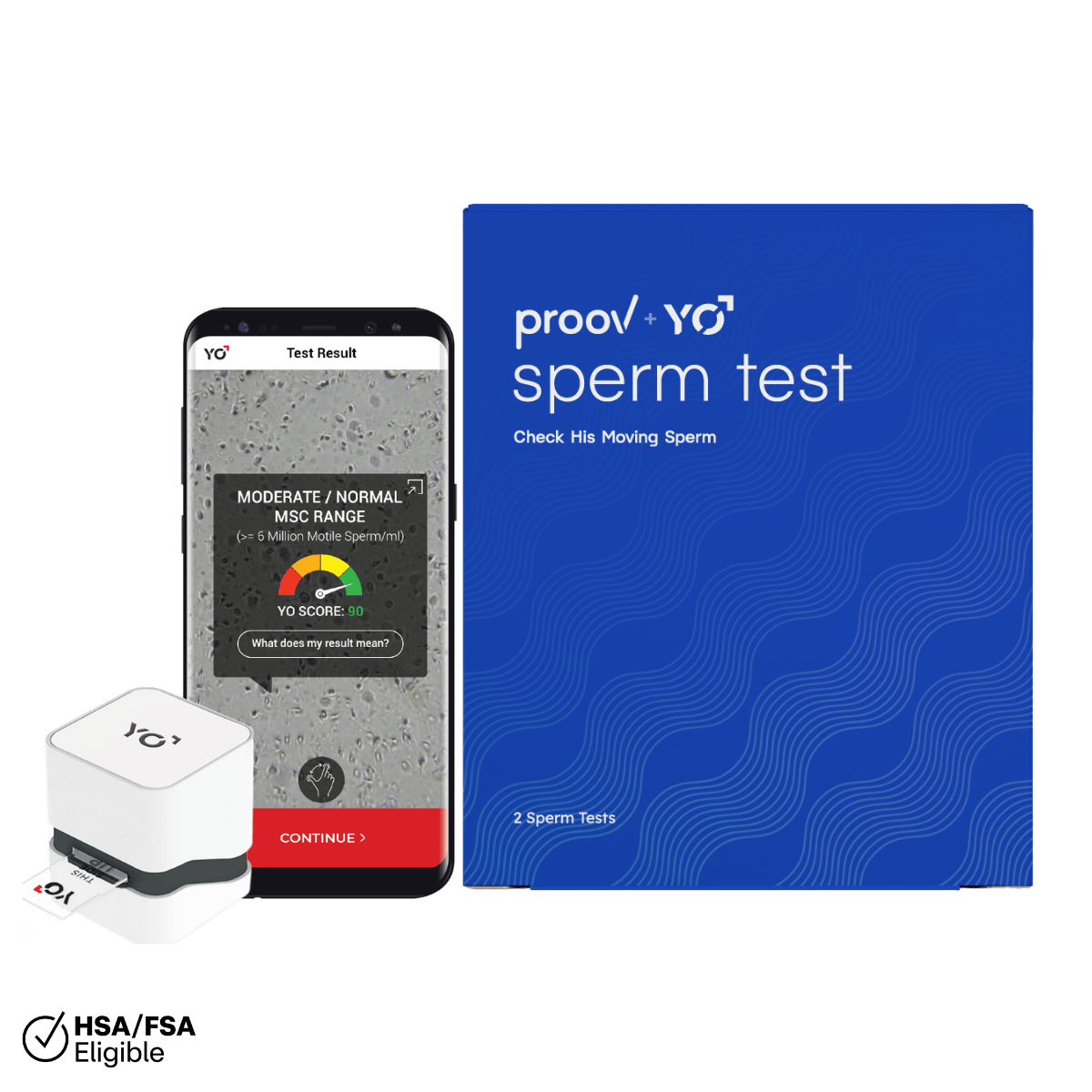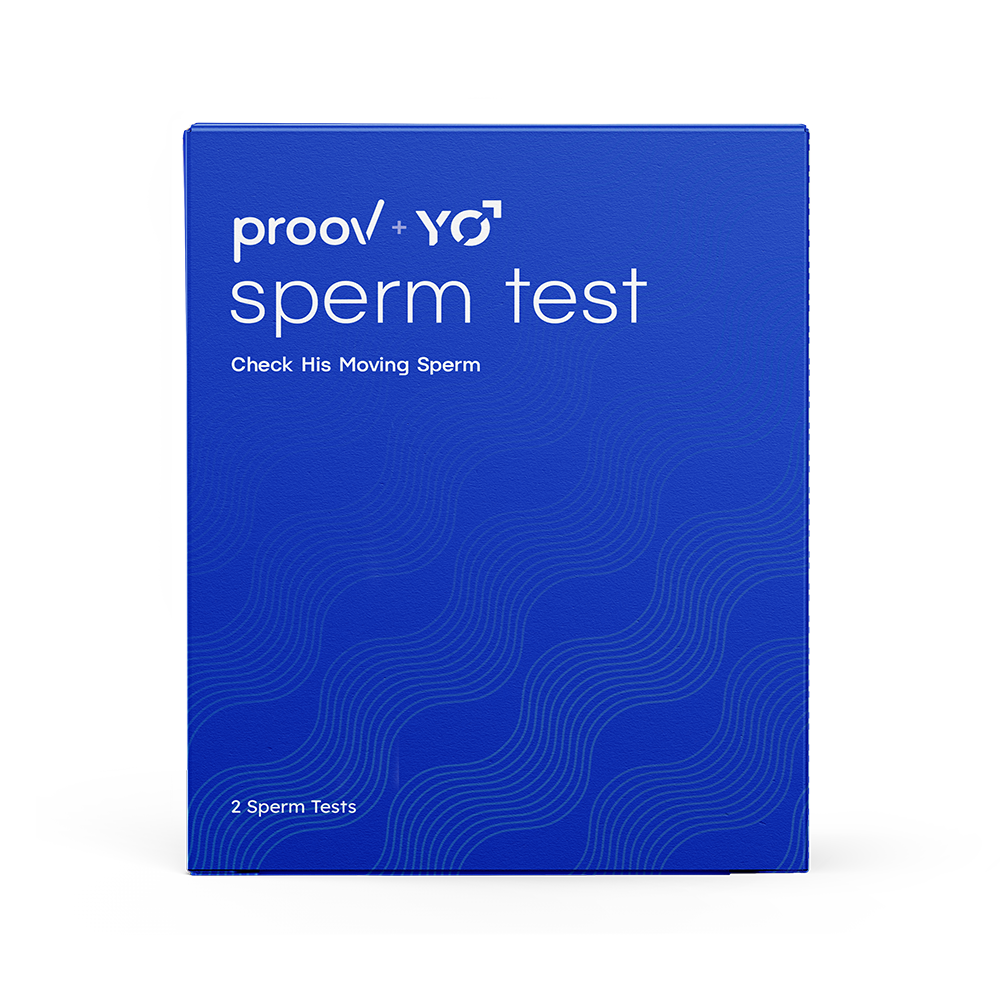Written by: Dr. Amy Beckley, PhD, Founder and Inventor of the Proov test — the first and only FDA-cleared test to confirm successful ovulation at home.
Written on 6/16/21
If you’re already a Proov fan, you probably know that confirming successful ovulation can help you get pregnant faster. This is because successful ovulation ensures you have enough progesterone to support a growing embryo, should it implant.
However, there is a common misconception that you cannot get pregnant with negative Proov PdG tests; this isn’t true. It’s entirely possible to get pregnant with negative Proov PdG tests — we’re just here to provide you with more information about your body in the case that weak ovulation (or low PdG) is preventing you from conceiving. What does low PdG mean? Keep reading to learn more!
What is PdG and why is it important?
Pregnanediol Glucuronide (PdG) is the main urinary metabolite of progesterone. Progesterone, together with estrogen, is one of two main female sex hormones that regulate your cycle and play vital roles in reproduction.
Progesterone is low during the first half of your cycle. After ovulation, the empty follicle from which the egg was released (also known as the corpus luteum) produces progesterone. Its main job is to stabilize the uterine lining and make it “sticky” enough for an embryo to implant. Without enough progesterone after ovulation, it can be more difficult to conceive.
Progesterone levels are supposed to stay high enough for long enough to ensure a healthy luteal phase of at least 11-12 days, which gives the embryo time to implant given that conception occured. If the embryo successfully implants, progesterone will remain elevated throughout pregnancy. If conception doesn’t take place, progesterone levels start dropping by the end of the luteal phase, your uterine lining sheds, and your period arrives.
Once progesterone circulates through your bloodstream, it is metabolized by your liver and excreted by your kidneys in your first morning urine as PdG. Studies show that PdG levels in first morning urine show an average of serum progesterone levels from the day before.
Understanding your PdG levels if pregnant or after ovulation can give insight into your progesterone levels during the same time period. As we know, having enough progesterone (and therefore PdG) after ovulation is critical to conception!
What are PdG tests and what can they tell me?
What is a PdG test? PdG tests are urine-based hormone test strips that allow for at-home PdG tracking by measuring levels in first morning urine. While they are small and easy to use, they provide you with loads of important information!
Proov PdG tests are the first and only FDA cleared PdG tests to confirm successful ovulation at home. Proov PdG tests are designed to turn positive when 5 ug/ml of PdG is present in urine.
While a single positive Proov PdG test confirms ovulation, you can use the patented Proov testing protocol to confirm successful ovulation. “Successful” ovulation refers to an ovulatory event in which an egg is released and PdG levels rise and remain elevated for a long enough period of time to cover the 4 most important days of your luteal phase, also called the implantation window.
To confirm successful ovulation with Proov, we recommend taking a baseline PdG test the day after your period ends. This test will be negative and can be useful in determining if you ovulated later on in the case that you do not get a positive result.
Next, you’ll want to test your PdG levels each morning on days 7, 8, 9, and 10 past peak fertility (i.e. a positive LH test or fertile cervical mucus observation). We like to see 3-4 positive PdG tests (with a positive on day 10 past peak fertility) during the testing window to confirm that successful ovulation did in fact occur.
Below, we’ve laid out some possible Proov outcomes:

Successful Ovulation: This means ovulation occurred and PdG was elevated for long enough. It’s usually when you have four positive PdG tests during the 7-10 days past peak fertility (DPP) window. Or, you could also have successful ovulation if you have 3 out of 4 positives with a positive on day 10 past peak.

Weak Ovulation: This means ovulation occurred, but PdG levels weren’t high enough — or dropped too soon — which could indicate a problem with ovulation. Your PdG test lines on days 7-10 past peak fertility appear lighter than the baseline test, but never really disappear. You could also have weak ovulation if you only have one or two positives during the testing window.

No Ovulation: This means ovulation likely did not occur and there was not a rise in PdG. PdG tests during the testing window are negative with no change vs. the baseline.
What do negative PdG tests mean?
As we saw in the above charts, what a negative Proov test means depends on when you test and how “negative” your test is. This is why testing all four days is so critical — a negative PdG test may either mean you haven’t ovulated or that you ovulated but your PdG levels aren’t quite at the optimal level.
It all starts with that handy baseline test! As we mentioned, we recommend taking your baseline the day after your period ends, ideally between cycle days 5 and 10, before your LH levels start surging.
Your baseline test shows what your negative looks like. Every woman is different and some women have lighter or darker baseline tests than others. Understanding what your unique baseline looks like can help us tell if you’ve ovulated in the event that your 7 DPP test isn’t completely positive (meaning it still shows a test line, regardless of how faint).
That’s right — a negative PdG test during the testing window doesn’t necessarily mean you haven’t ovulated! If your 7 DPP test is negative but the test line is significantly lighter than your baseline, you have likely ovulated. (See, we told you that baseline would come in handy!) However, if your 7 DPP test shows the same intensity as your baseline, you probably have not ovulated.
But as we mentioned, we like to see Proov PdG test results across the whole 7-10 DPP window to check for successful ovulation. Ovulation is considered successful when you get 3-4 positive Proov PdG tests, with a positive on day 10 past peak fertility. So, one negative PdG test is fine, as long as you’re still getting a positive result on 10 DPP.
However, more than one negative PdG test during the testing window may be a sign of “weak” ovulation, which can make it more difficult (but not impossible) to successfully conceive.

More than one negative PdG test during the testing window may be a sign of “weak” ovulation.
Can I get pregnant with negative PdG tests?
Potentially, yes!
Progesterone and PdG levels are not the only piece of the pregnancy puzzle. You may have amazing levels and not conceive, just like you may get pregnant with low levels. However, it’s important to note how critical progesterone is for conception and sustaining a healthy pregnancy.
In fact, studies* show that the chances of having a successful pregnancy increase from 19% to 92% with elevated PdG levels after ovulation. The sooner you ensure your levels are good, the better chance you have at a successful pregnancy.
If you do experience “weak” ovulation (i.e. 2 or more negative Proov PdG tests) and get a positive pregnancy test that same cycle, we recommend consulting your doctor. While some women experience increased progesterone production once they are pregnant, studies show that insufficient progesterone production during the luteal phase can put you at higher risk for early miscarriage.
Luckily, studies also show that progesterone supplementation may prevent thousands of miscarriages every year. We believe in providing women with valuable information so that they can get support if they need it.
With Proov, you can know more about your PdG levels so that you can get pregnant faster!
Note that Proov PdG tests are not intended for use during pregnancy. Please consult your doctor if you are pregnant.
*Bernstein, D., Frishman, H., Levin, S., and Schwartz, S. “The Value of Urinary Pregnanediol Estimation for Monitoring Early Pregnancies”, Fertility and Sterility, Vol 29 No 2, February 1978.












